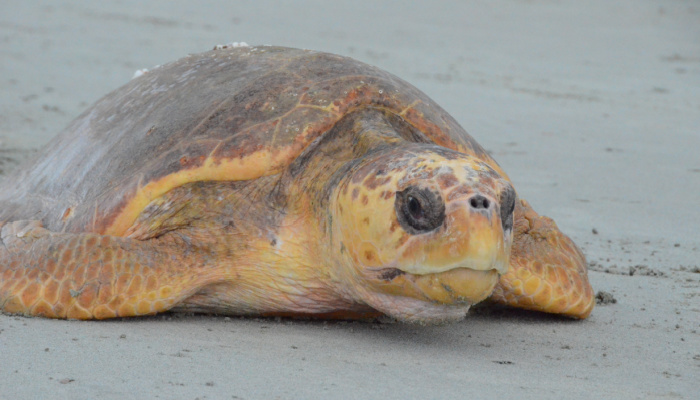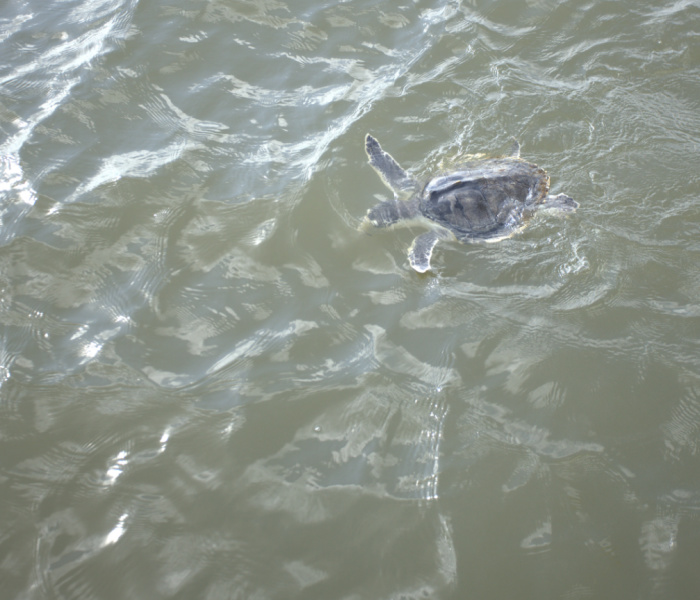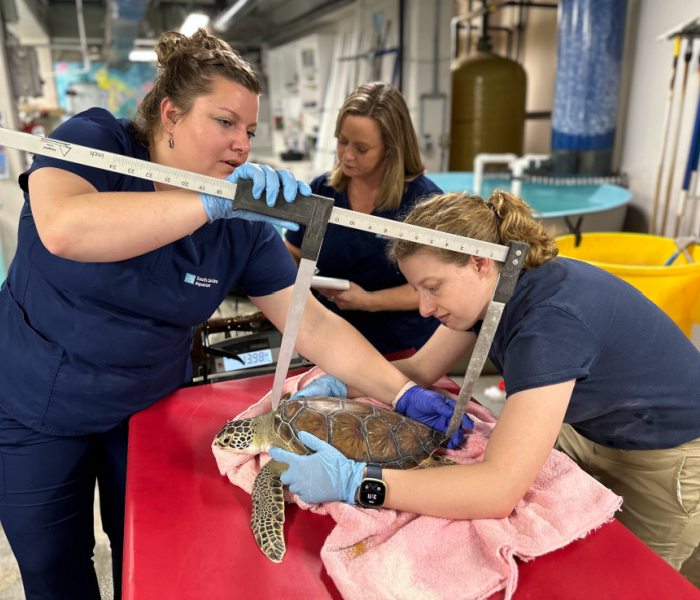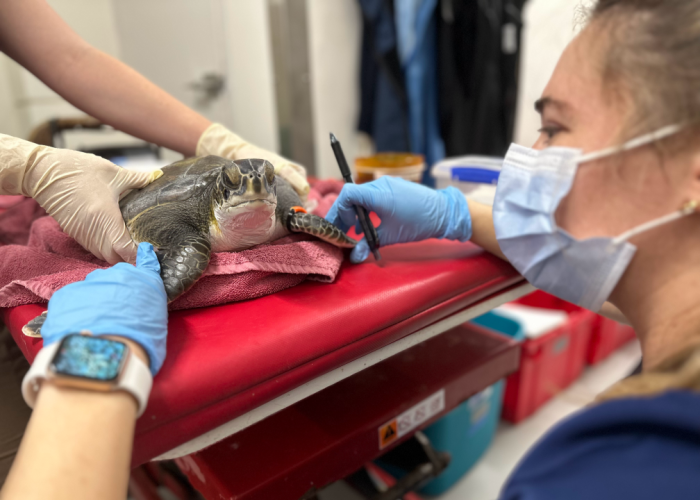Ever find yourself meandering along the beach, bundled up from head to toe, during one of those cold snaps the Lowcountry endures? It’s a magical experience if you can brave it; not a soul in sight, you have the whole beach to yourself with just the cool, salty sting of air on your cheeks grounding you in the moment. The beach may look abandoned, but more often than you think, an unlucky sea turtle has stranded on the shore. This cause of sea turtle stranding is called cold stunning, and it surprisingly connects back to the climate.
The Perfect Storm
Here in South Carolina, we typically see Kemp’s ridley, loggerhead and green sea turtles in our local waters year round. In the summer, they may head as far north as the New England area. By the end of the season when temperatures begin to drop, sea turtles will typically migrate back south in search of warmer waters.
 Loggerhead sea turtle: an iconic Lowcountry species
Loggerhead sea turtle: an iconic Lowcountry speciesAs ectotherms — animals that take on the temperature of their environment — sea turtles have the unique ability to slow their heart rate and metabolism in response to a cooler environment. This means they can withstand colder than normal temperatures, if the shift is slow and short lived. However, when a cold front sweeps through and causes a drastic drop in temperature quickly or the cold weather lingers for too long, sea turtles experience negative impacts.
In reaction to these weather changes, sea turtles stop swimming and are pushed onshore by the ocean and wind currents. On land, they’re exposed to stinging winds and their body temperatures drop even more. This causes advanced hypothermia, frostbite or pneumonia. At this point, they are considered cold stunned; if not treated in a timely manner, this can be fatal.
Unpredictable Patterns
The southeast coast is home to tidal marshes, creeks and shallow bays, which have abundant food sources year-round for sea turtles. Historically, they have been safe inhabiting South Carolina waters through the winter as water temperatures cool slowly and stay stable. In recent years, weather patterns have been changing drastically and in these periods of rapid shifts, sea turtles don’t have adequate time to adjust or migrate, leaving them vulnerable to cold stunning.
 Kemp's ridley sea turtle swimming in the saltmarsh
Kemp's ridley sea turtle swimming in the saltmarshWith each extreme climate event comes a significant risk to sea turtles, and ours is not the only coastline experiencing its impacts. Back in 2021, the largest cold stunning event in United States history occurred on the Texas coastline in the Gulf of Mexico. Reports indicated that more than 10,000 sea turtles stranded and only 35% survived. This was a direct result of an extreme climate event called a polar vortex that plunged into the region and lingered for several days.
Because we’re experiencing a slowly warming climate, winter storms that typically stayed in northern latitudes are becoming increasingly unstable, ultimately wobbling and winding into the southern latitudes. This scenario is similar to how hurricanes can increase in strength and severity, a weather pattern the Lowcountry is better prepared to handle. In places where this cold weather pattern is not the historic norm, we’re seeing major impacts to infrastructure, the environment and wildlife.
Caring for Cold Stuns
Deciding the best way to take action against climate change is not always straightforward. We can’t alter weather patterns caused by a warming climate, but we can help the animals directly affected by these storms. Already this winter, the Sea Turtle Care Center™ has admitted 18 cold-stun patients, 15 transferred from the New England area and three that were stranded locally. This group of patients is a mix of juvenile Kemp’s ridley and green sea turtles, two of the most susceptible species to this cause of stranding.
 Care Center staff measuring a cold-stun green sea turtle
Care Center staff measuring a cold-stun green sea turtleSeveral of these patients now reside in Zucker Family Sea Turtle Recovery™ where you can see them up close and learn their stories. Many of these patients are battling the impacts of being cold stunned along with other ailments requiring specialized care, so our Care Center staff is running through supplies quickly these days.
You can help our Care Center staff continue to provide top-notch care to our sea turtle patients by donating supplies through our Amazon Wish List below!
Published February 8, 2023


